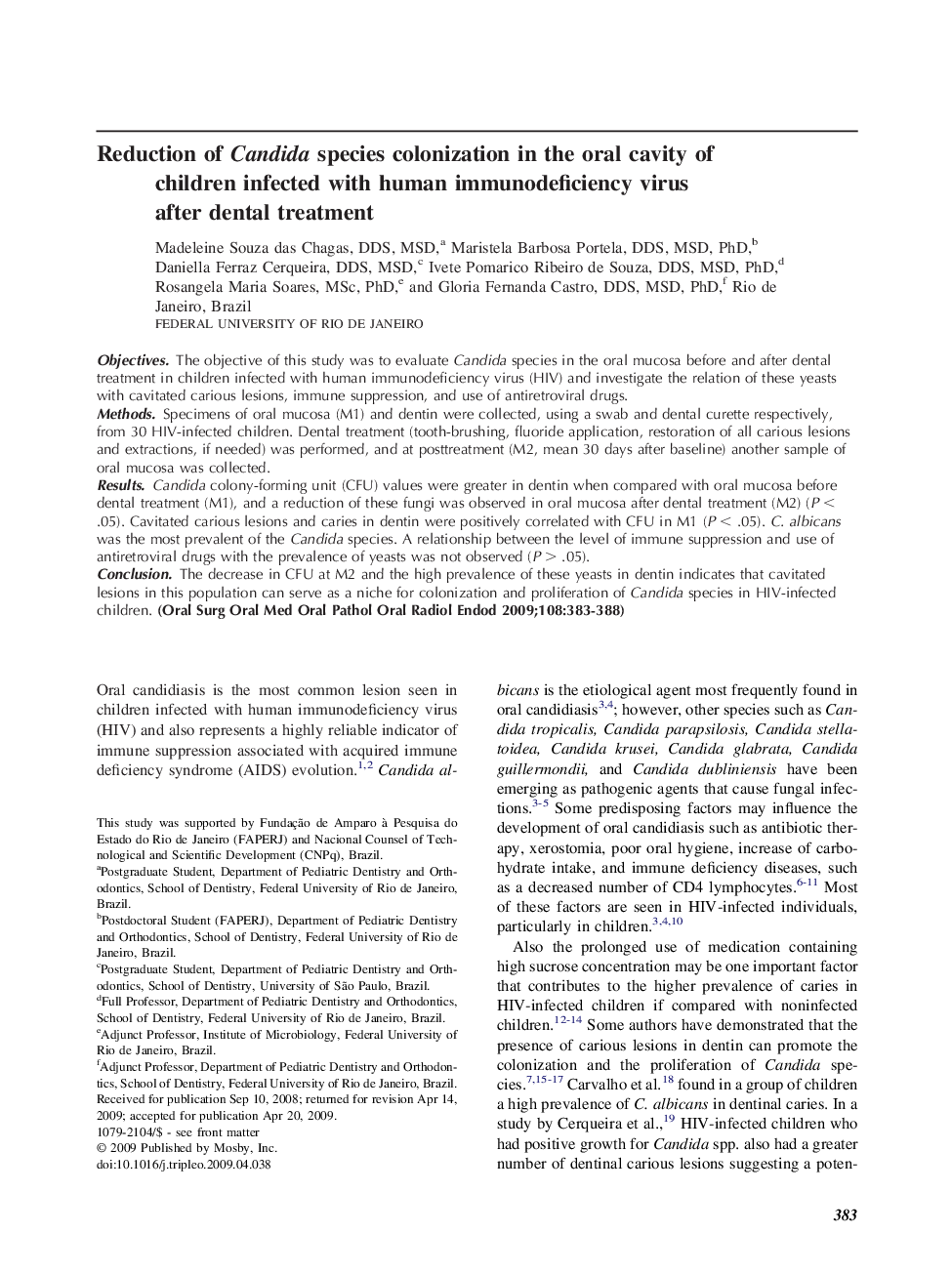| Article ID | Journal | Published Year | Pages | File Type |
|---|---|---|---|---|
| 3167973 | Oral Surgery, Oral Medicine, Oral Pathology, Oral Radiology, and Endodontology | 2009 | 6 Pages |
ObjectivesThe objective of this study was to evaluate Candida species in the oral mucosa before and after dental treatment in children infected with human immunodeficiency virus (HIV) and investigate the relation of these yeasts with cavitated carious lesions, immune suppression, and use of antiretroviral drugs.MethodsSpecimens of oral mucosa (M1) and dentin were collected, using a swab and dental curette respectively, from 30 HIV-infected children. Dental treatment (tooth-brushing, fluoride application, restoration of all carious lesions and extractions, if needed) was performed, and at posttreatment (M2, mean 30 days after baseline) another sample of oral mucosa was collected.ResultsCandida colony-forming unit (CFU) values were greater in dentin when compared with oral mucosa before dental treatment (M1), and a reduction of these fungi was observed in oral mucosa after dental treatment (M2) (P < .05). Cavitated carious lesions and caries in dentin were positively correlated with CFU in M1 (P < .05). C. albicans was the most prevalent of the Candida species. A relationship between the level of immune suppression and use of antiretroviral drugs with the prevalence of yeasts was not observed (P > .05).ConclusionThe decrease in CFU at M2 and the high prevalence of these yeasts in dentin indicates that cavitated lesions in this population can serve as a niche for colonization and proliferation of Candida species in HIV-infected children.
